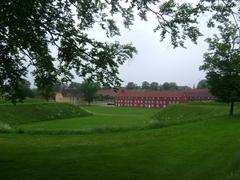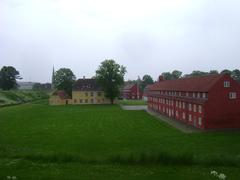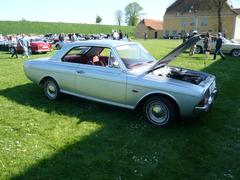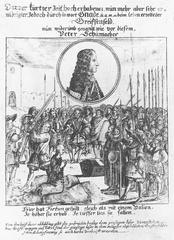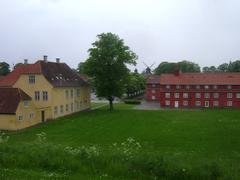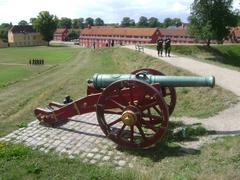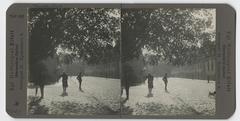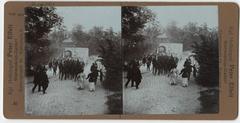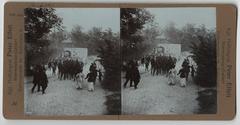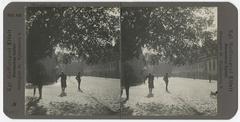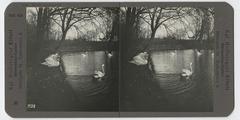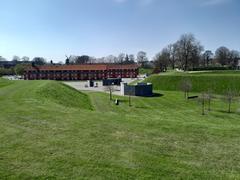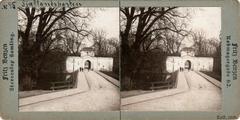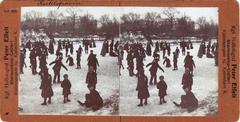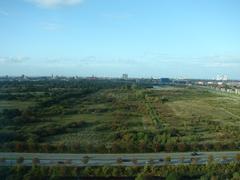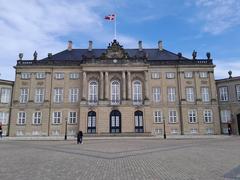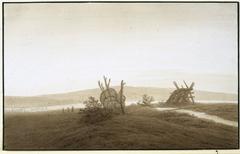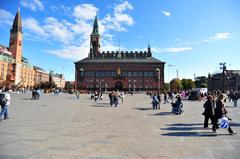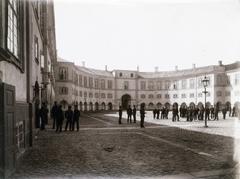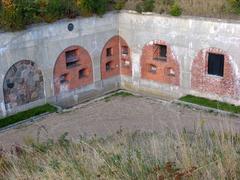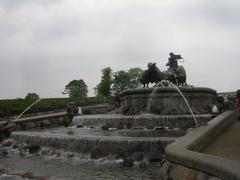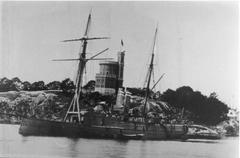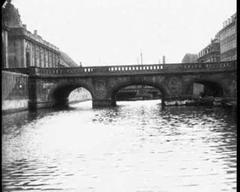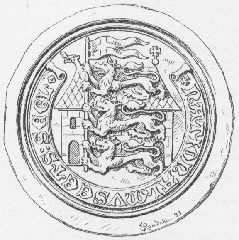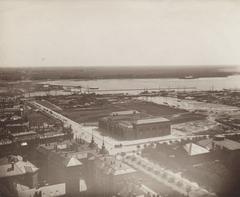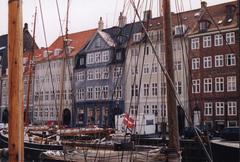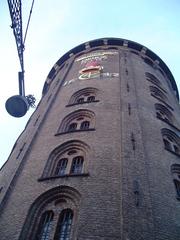
Visiting Hours, Tickets, and Highlights of Kastellet in Frederiksberg, Denmark
Date: 19/07/2024
Introduction
Kastellet, also known as The Citadel, is a must-visit historical site in Copenhagen, Denmark. Renowned for its well-preserved star fortress design, Kastellet offers a unique blend of military history, architectural beauty, and serene landscapes. Originally constructed in 1626 under the reign of King Christian IV and completed in 1664 under King Frederick III, Kastellet stands as one of the best-preserved star fortresses in Northern Europe. Its star-shaped design, complete with bastions and moats, exemplifies Renaissance military engineering and provides a fascinating glimpse into 17th-century defense strategies (Visit Copenhagen).
Throughout its history, Kastellet has played a vital role in Denmark’s military defenses, serving as a key fortification in various conflicts, including the Battle of Copenhagen in 1801 and the Second Battle of Copenhagen in 1807. It has also functioned as a prison for political prisoners and military personnel. Today, Kastellet is not just a military relic; it has become a significant cultural and social landmark, hosting numerous events such as royal ceremonies, public gatherings, and the annual Liberation Day celebrations on May 5th (Danish Military History).
Visitors to Kastellet can explore its well-preserved ramparts, bastions, and historical buildings, including the Commander’s House, the Church, and the Windmill. The site also features several poignant memorials, such as the Monument to Denmark’s International Effort Since 1948. With its rich history, architectural significance, and cultural relevance, Kastellet offers an enriching experience for history enthusiasts, casual tourists, and photography buffs alike (National Museum of Denmark).
Table of Contents
- [Introduction](#introductionintroduction)
- [Origins and Early History](#origins-and-early-historyorigins-and-early-history)
- [Expansion and Modifications](#expansion-and-modificationsexpansion-and-modifications)
- [Role in Danish Wars](#role-in-danish-warsrole-in-danish-wars)
- [19th and 20th Century Developments](#19th-and-20th-century-developments19th-and-20th-century-developments)
- [Modern-Day Kastellet](#modern-day-kastelletmodern-day-kastellet)
- [Architectural Significance](#architectural-significancearchitectural-significance)
- [Preservation Efforts](#preservation-effortspreservation-efforts)
- [Visitor Experience](#visitor-experiencevisitor-experience)
- [Practical Information for Visitors](#practical-information-for-visitorspractical-information-for-visitors)
- [Special Events and Guided Tours](#special-events-and-guided-toursspecial-events-and-guided-tours)
- [Photographic Spots](#photographic-spotsphotographic-spots)
- [FAQ](#faqfaq)
- [Conclusion](#conclusionconclusion)
Origins and Early History
Kastellet’s construction began in 1626 under the reign of King Christian IV of Denmark, a monarch known for his ambitious building projects. The initial purpose of Kastellet was to strengthen the defenses of Copenhagen, which was increasingly under threat from foreign powers. The fortress was designed by the Dutch engineer Henrik Ruse, who was instrumental in introducing the star fort design to Denmark. This design, characterized by its bastions and moats, was considered state-of-the-art military architecture at the time (Visit Copenhagen).
Expansion and Modifications
The construction of Kastellet was completed in 1664 under King Frederick III, who expanded the original plans. The fortress was built in the shape of a pentagon with five bastions named after the Danish monarchy - King’s Bastion, Queen’s Bastion, Count’s Bastion, Princess’s Bastion, and Prince’s Bastion. Each bastion was equipped with cannons and other artillery to fend off attackers. The fortress also included a series of ramparts, moats, and gates, making it a formidable defensive structure (National Museum of Denmark).
Role in Danish Wars
Kastellet played a significant role in several conflicts throughout Danish history. During the Second Northern War (1655-1660), it served as a critical defensive position against Swedish forces. The fortress was also involved in the Battle of Copenhagen in 1801, when British forces under Admiral Nelson attacked the Danish fleet. Although the fortress itself was not directly assaulted, its presence helped to deter a full-scale invasion of the city (Denmark History).
19th and 20th Century Developments
In the 19th century, the military significance of Kastellet began to wane as advancements in artillery made traditional fortifications less effective. However, it continued to serve as a military barracks and prison. During World War II, the fortress was occupied by German forces, who used it as a headquarters. After the war, Kastellet was returned to Danish control and underwent several restoration projects to preserve its historical significance (Copenhagen Museums).
Modern-Day Kastellet
Today, Kastellet is a popular tourist attraction and a peaceful public park. The fortress is still owned by the Danish Ministry of Defence, but it is open to the public and hosts various cultural events throughout the year. Visitors can explore the well-preserved ramparts, bastions, and historical buildings, including the Commander’s House and the Church of Kastellet. The site also features several memorials, including one dedicated to Danish soldiers who have died in international missions (Kastellet Official Site).
Architectural Significance
Kastellet is an excellent example of Renaissance military architecture. The star-shaped design, with its angular bastions and surrounding moat, was intended to provide optimal defense against artillery attacks. The fortress’s layout allowed defenders to cover all approaches with overlapping fields of fire, making it difficult for attackers to find a safe route to the walls. The use of earthworks and brick construction also helped to absorb and deflect cannon fire, further enhancing the fortress’s defensive capabilities (Architectural Digest).
Preservation Efforts
Preservation of Kastellet has been a priority for the Danish government and various heritage organizations. Restoration projects have focused on maintaining the structural integrity of the ramparts, bastions, and historical buildings. Efforts have also been made to preserve the natural environment within the fortress, including the moat and surrounding green spaces. These initiatives ensure that Kastellet remains a valuable historical and cultural asset for future generations (Heritage Denmark).
Visitor Experience
Visitors to Kastellet can enjoy a range of activities, from leisurely walks along the ramparts to guided tours that delve into the fortress’s rich history. The site is easily accessible from central Copenhagen and offers stunning views of the city and harbor. Information panels and interactive exhibits provide insights into the fortress’s historical significance and architectural features. Additionally, Kastellet hosts various events, including military ceremonies, concerts, and cultural festivals, making it a vibrant part of Copenhagen’s cultural landscape (Visit Denmark).
Practical Information for Visitors
Visiting Hours: Kastellet is open to the public daily from 6:00 AM to 10:00 PM. However, some buildings within the fortress may have restricted access or specific visiting hours.
Tickets: Entry to Kastellet is free, but guided tours may have a fee. It is advisable to check the official website for the latest information on guided tour prices and availability.
Travel Tips: Kastellet is located within walking distance from central Copenhagen and is easily accessible by public transport. Bicycle rentals are also available nearby, offering a convenient way to explore the area.
Nearby Attractions: While visiting Kastellet, you can also explore nearby attractions such as the Little Mermaid statue, Amalienborg Palace, and the Gefion Fountain.
Accessibility: Kastellet is generally accessible for visitors with mobility issues, although some areas might be challenging due to uneven terrain. It’s recommended to check the official site for detailed accessibility information.
Special Events and Guided Tours
Kastellet hosts a variety of special events throughout the year, including military ceremonies, concerts, and cultural festivals. Guided tours are available and offer a deeper insight into the history and architecture of the fortress. These tours are conducted by knowledgeable guides and can be booked in advance through the official website.
Photographic Spots
Kastellet offers several picturesque spots perfect for photography. The ramparts provide stunning panoramic views of Copenhagen, while the historic buildings and serene green spaces make for beautiful backdrops. Don’t miss the chance to capture the iconic windmill located within the fortress grounds.
FAQ
What are the opening hours of Kastellet? Kastellet is open daily from 6:00 AM to 10:00 PM.
How much do tickets to Kastellet cost? Entry to Kastellet is free, but guided tours may have a fee.
Is Kastellet accessible for visitors with mobility issues? While generally accessible, some areas may be challenging due to uneven terrain. It’s best to check the official site for detailed accessibility information.
Conclusion
Kastellet stands as a testament to Denmark’s military history and architectural ingenuity. Its well-preserved structures and serene surroundings offer a unique glimpse into the past, making it a must-visit destination for history enthusiasts and casual tourists alike. The fortress’s ongoing preservation efforts ensure that it will continue to be a cherished landmark for years to come. Plan your visit today and explore one of Copenhagen’s most captivating historical sites (Copenhagen Official Tourism).
References
- Visit Copenhagen. (n.d.). Kastellet. Retrieved from Visit Copenhagen
- National Museum of Denmark. (n.d.). Kastellet. Retrieved from National Museum of Denmark
- Danish Military History. (n.d.). Kastellet. Retrieved from Danish Military History
- Copenhagen Museums. (n.d.). Kastellet. Retrieved from Copenhagen Museums
- Heritage Denmark. (n.d.). Kastellet. Retrieved from Heritage Denmark

